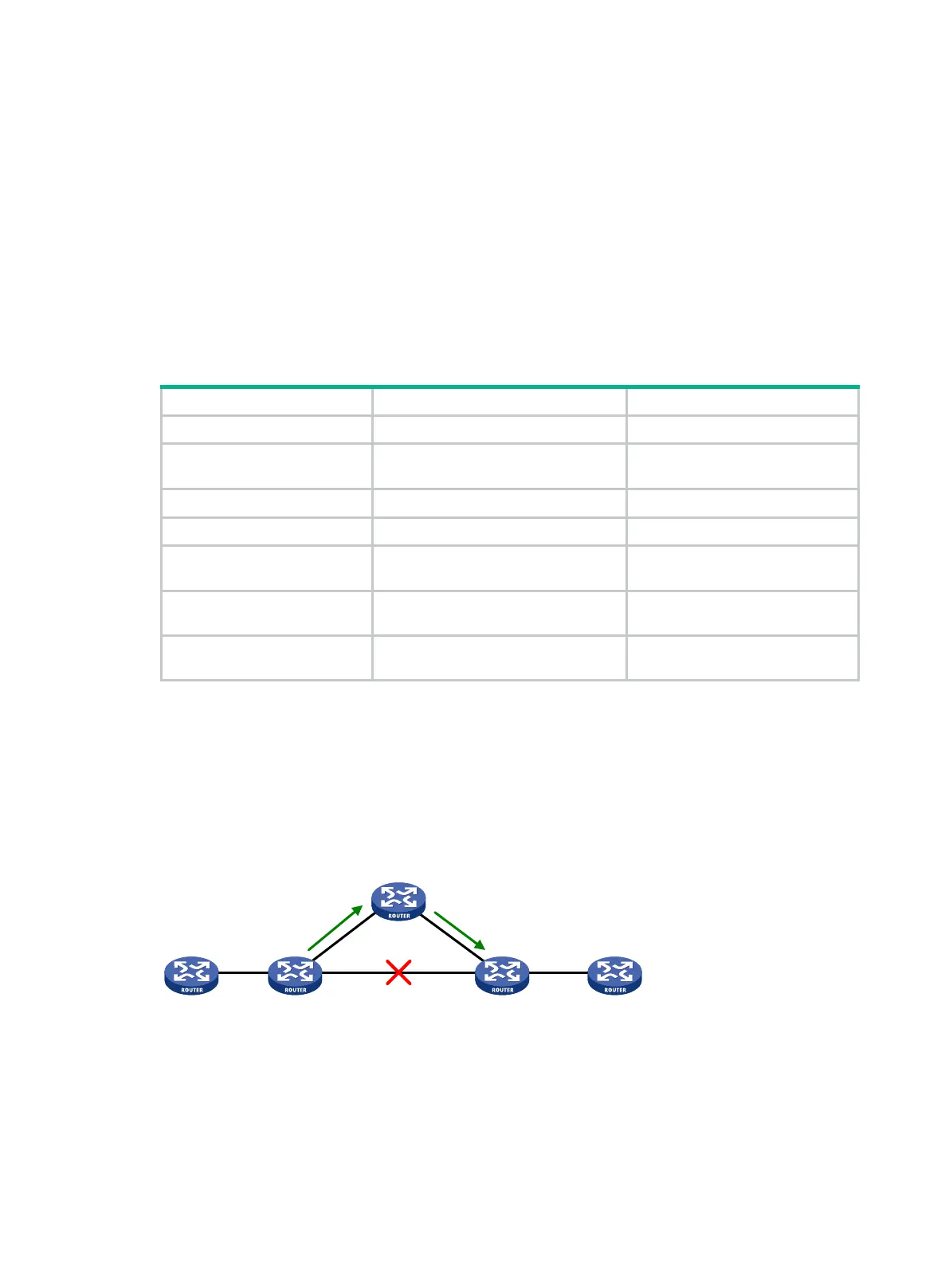431
Configuring BFD for OSPFv3
Bidirectional forwarding detection (BFD) provides a mechanism to quickly detect the connectivity of
links between OSPFv3 neighbors, improving the convergence speed of OSPFv3. For more
information about BFD, see High Availability Configuration Guide.
After discovering neighbors by sending hello packets, OSPFv3 notifies BFD of the neighbor
addresses, and BFD uses these addresses to establish sessions. Before a BFD session is
established, it is in the down state. In this state, BFD control packets are sent at an interval of no less
than 1 second to reduce BFD control packet traffic. After the BFD session is established, BFD control
packets are sent at the negotiated interval, thereby implementing fast fault detection.
To configure BFD for OSPFv3, you need to configure OSPFv3 first.
To configure BFD for OSPFv3:
1. Enter system view.
N/A
2. Enter OSPFv3 view.
ospfv3
[ process-id |
vpn-instance
vpn-instance-name ] *
N/A
3. Specify a router ID.
router-id N/A
4. Quit the OSPFv3 view.
quit
N/A
5. Enter interface view.
interface
interface-type
interface-number
N/A
6. Enable an OSPFv3
process on the interface.
ospfv3
process-id
area
area-id
[
instance
instance-id ]
N/A
7. Enable BFD on the
interface.
ospfv3 bfd enable
[
instance
instance-id ]
By default, BFD is disabled on the
OSPFv3 interface.
Configuring OSPFv3 FRR
A primary link failure can cause packet loss and even a routing loop until OSPFv3 completes routing
convergence based on the new network topology. OSPFv3 FRR enables fast rerouting to minimize
the failover time.
Figure 99 Network diagram for OSPFv3 FRR
As shown in Figure 99, configure FRR on Router B. OSPFv3 FRR automatically calculates a backup
next hop or specifies a backup next hop by using a routing policy. When the primary link fails,
OSPFv3 directs packets to the backup next hop. At the same time, OSPFv3 calculates the shortest
path based on the new network topology. It forwards packets over the path after network
convergence.
You can configure OSPFv3 FRR to calculate a backup next hop by using the loop free alternate
(LFA) algorithm, or specify a backup next hop by using a routing policy.
Backup nexthop: Router C
Router ENexthop: Router D
Router A Router B

